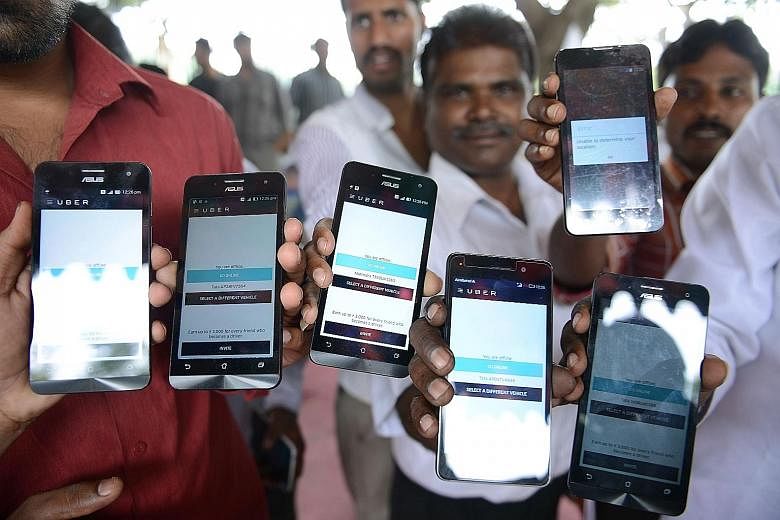Prime Minister Narendra Modi hopes to deliver high-speed Internet to every part of India as part of his digital India scheme. But even before this ambitious plan can take off, his government is grappling with a far more basic challenge - dropped calls.
Last week, at an internal government meeting, Mr Modi himself addressed the issue of mobile phone connections cutting off in the middle of a call, much to the surprise of the telecommunications sector, asking officials to "urgently resolve the problem".
The government feels it is getting too much bad publicity over the deteriorating quality of phone services and has urged telecoms to "optimise existing services". It is looking at allotting additional tower sites on government buildings and possibly defence sites and getting telecom companies to reveal their capacity so that consumers are aware of the problems.
India's telecom industry consists of almost a dozen operators. Over the last 15 years, it has transformed the lives of millions of Indians to the point where even the poor can afford a phone and a connection. India now has the second-largest number of phone subscribers in the world at 960 million people, behind China, with 1.29 billion mobile users.
While mobile service quality was good at first, it has dropped over the last decade, and call drops have become a chronic problem in major cities such as New Delhi and Mumbai over the last year.
"You can't have more than a five-minute call without breaking up. This is a basic need of a voice call,'' said Mr Rishi Sahai, the managing director of Delhi-based consultancy Cogence Advisors.
"The quality of service has gone down as penetration has increased."
The country has one of the worst call-drop ratios in the world at 12 per cent against 3 per cent in developed countries, according to the Telecom Regulatory Authority of India.
A growing demand for data services, limited spectrum - the airwaves for mobile phones - for both data and voice calls and not enough cellphone towers or sites are seen as some of the reasons for call drops. Others include problems like 4G networks being rolled out when 3G and, in some places, 2G, are still being implemented, and calls getting cut off during the transition.
The largest operator in Delhi has 300 million subscribers but over three times less spectrum compared to developed countries with the same population.
"By 2008/2009, many people in India had stopped using landlines and started using mobile phones. Today, it is the reverse. When I am at home, I call from the landline. Otherwise, it is impossible to have a conversation. This has happened in the last one year," said Mr Kartik Raja, founder & managing director, PhiMetrics Technologies, a Singapore company with operations in India based in Mumbai.
"The problem is that (like in many other countries) the data network is not that good to make voice calls and yet voice call quality is deteriorating," he said.
"Three things are needed in the ecosystem: The data network has to be good, prices of data have to drop and a learning curve has to be there, None of these things have happened in India."
The government has blamed operators for failing to use their spectrum wisely, diverting spectrum from voice to data where there is more profit, while telecom operators said that the problem is a lack of towers and spectrum.
"We are addressing it and in the next six to nine months, there will be an improvement," said Mr Rajan S. Mathews, the director-general of Cellular Operators Association of India. "It requires the concerted cooperation of the government," he added.
India is expected to become the world's second biggest smart phone market, overtaking United States by 2017, according to some estimates. Already, as the Chinese phone market gets increasingly saturated, Chinese phone makers like Huawei Technologies and Oppo Mobile Telecommunications Corp have said they want to produce in India, while Xiaomi has started assembling phones in India.
"India is really pushing digital India. If we don't solve this (call drop), it will hit India's image," said Mr Romal Shetty, the head of telecommunications at KPMG. "But this is an emerging market issue."

